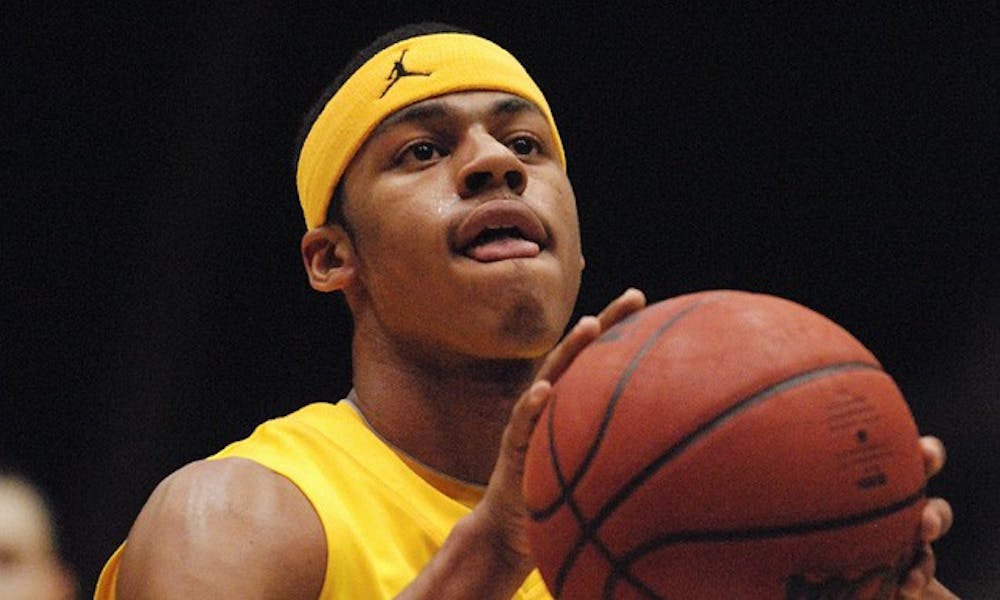“I’m living in the future so the present is my past.”
While I’m fairly confident the song “Monster” is not Kanye West’s social commentary on the state of college basketball recruiting, there’s no better way to describe the absurd fixation fans and coaches alike have placed on teen—and even pre-teen—players.
Granted, the national attention is more warranted in basketball than any other major sport because of a freshman’s ability to have a major impact from day one (see Irving, Kyrie). But it’s all this attention that journalists of my ilk believe lead to the inconceivably-egotistical actions by college and NBA players alike, with Lebron’s “Decision” as a recent, but far from isolated, example.
So naturally, and hypocritically, I poured my own fuel on the fire by sitting on press row Friday night for the North Carolina Play-by-Play Classic at Cameron Indoor Stadium. The event showcased three of the Blue Devils’ Class of 2011, which was ranked third by ESPN.
I came to get a real, live look at the three future Dukies, but by the end of the night I realized I knew little more than I had before I arrived. That’s attributable in part to the thorough data compiled by scouting services like Rivals and Scout, but it’s also a reflection of the team dynamic of basketball. A basketball player’s success hinges extensively on the talent of those around him, making it an increasingly complex task to isolate one player’s value.
Never has this principle been clearer than in the night’s first game, which pitted America’s most prestigious high school basketball program, Oak Hill Academy (Va.), against Christ School (N.C.), another member of the nation’s elite, albeit not at the same level. While the game’s final score was 78-64 in favor of the Warriors, the actual contest wasn’t nearly that close. Quinn Cook finished with 26 points and six assists, leaving with a team MVP award, while Marshall Plumlee’s final line was a far more pedestrian nine points and eight rebounds.
But at the end of the day, the box score doesn’t tell the whole story.
At Oak Hill, Cook plays with a surrounding cast of the nation’s best prep school ballers. The school plays nationally televised games all over the Eastern seaboard, and it traveled to Honolulu for a week-long tournament in December. The team is filled with upperclassmen, the vast majority of whom transferred to the elite boarding school to showcase their talents year-round. Alumni include Carmelo Anthony, Rajon Rondo, Kevin Durant, Stephen Jackson, and, of course, Nolan Smith.
Even in what has been considered a down year for the prestigious program— a 22-3 record has it ranked 12th nationally by USA Today—the Warriors’ starting lineup is full of NCAA Division-I recruits, including three ranked in Rivals’ top-75.
Plumlee’s team, with its own 27-4 record and national top-40 ranking, is no pushover. The school has three Division-I commits of its own, but make no mistake, Plumlee’s supporting cast is a far cry from Cook’s. Marshall was matched up in the paint against a rotating trio of highly-ranked big men—Arizona commit Sidiki Johnson, Oregon State commit Daniel Gomis and uncommitted Rivals Class of 2012 No. 11 center A.J. Hammons—yet still played all but two of the game’s minutes.
With Christ School’s defense stretched to all ends of the floor, Cook was able to drive through the lane to the rim without opposition. His individual highlights were enhanced by his luxury of relying on teammates to score when the situation wasn’t in his favor, a role similar to the one he’ll likely take next season.
In comparison, Plumlee appeared invisible, though he quietly made his mark on the offensive end by drawing defenders out of the lane to open space for driving guards. That, in part, explains his low rebounding totals, but his slight frame at 7-foot and just 215 pounds means his high position on the scouting charts is based more on potential than polish.
It was even tougher to get a grip on Gbinije’s role in the second game. The 6-foot-7 swingman is the tallest member of his Benedictine (Va.) team, but plays an undefined role on the perimeter somewhere between shooting guard and small forward. Against Our Savior New American he was matched up against a guard several inches shorter than him, a luxury that Gbinije won’t have when he enters the college ranks. True, a player with his combination of height and versatility is rarely found, but I couldn’t help but wonder how many of his picturesque jumpers would still go in with a real hand in his face. Then again, during the high school offseason Gbinije has proven himself against the best in his age group by playing for elite club teams and attending prestigious camps nationwide.
The bottom line is this: Scout and Rivals are generally excellent at extrapolating high school talent to see where a player fits in at the college level, so Duke fans have a right to be optimistic about the future.
But at the end of the day, predicting the potential of teenage athletes is far from an exact science.
Get The Chronicle straight to your inbox
Signup for our weekly newsletter. Cancel at any time.

